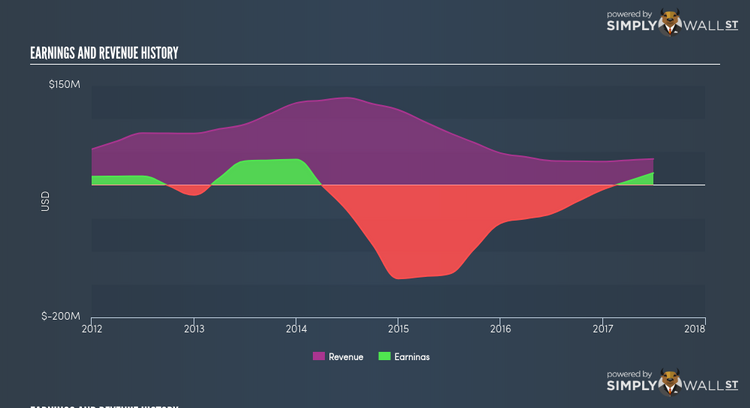What You Must Know About Trinity Exploration & Production plc’s (LON:TRIN) Market Risks

For Trinity Exploration & Production plc’s (AIM:TRIN) shareholders, and also potential investors in the stock, understanding how the stock’s risk and return characteristics can impact your portfolio is important. Every stock in the market is exposed to market risk, which arises from macroeconomic factors such as economic growth and geo-political tussles just to name a few. This is measured by its beta. Not all stocks are expose to the same level of market risk, and the market as a whole represents a beta value of one. Any stock with a beta of greater than one is considered more volatile than the market, and those with a beta less than one is generally less volatile.
View our latest analysis for Trinity Exploration & Production
What is TRIN’s market risk?
Trinity Exploration & Production has a beta of 2.31, which means that the percentage change in its stock value will be higher than the entire market in times of booms and busts. A high level of beta means investors face higher risk associated with potential gains and losses driven by market movements. Based on this beta value, TRIN can help magnify your portfolio return, especially if it is predominantly made up of low-beta stocks. If the market is going up, a higher exposure to the upside from a high-beta stock can push up your portfolio return.
Does TRIN’s size and industry impact the expected beta?
TRIN, with its market capitalisation of UK£50.13M, is a small-cap stock, which generally have higher beta than similar companies of larger size. In addition to size, TRIN also operates in the oil and gas industry, which has commonly demonstrated strong reactions to market-wide shocks. As a result, we should expect higher beta for small-cap stocks in a cyclical industry compared to larger stocks in a defensive industry. This supports our interpretation of TRIN’s beta value discussed above. Next, we will examine the fundamental factors which can cause cyclicality in the stock.
How TRIN’s assets could affect its beta
During times of economic downturn, low demand may cause companies to readjust production of their goods and services. It is more difficult for companies to lower their cost, if the majority of these costs are generated by fixed assets. Therefore, this is a type of risk which is associated with higher beta. I test TRIN’s ratio of fixed assets to total assets in order to determine how high the risk is associated with this type of constraint. With a fixed-assets-to-total-assets ratio of greater than 30%, TRIN appears to be a company that invests a large amount of capital in assets that are hard to scale down on short-notice. Thus, we can expect TRIN to be more volatile in the face of market movements, relative to its peers of similar size but with a lower proportion of fixed assets on their books. Similarly, TRIN’s beta value conveys the same message.
What this means for you:
You may reap the gains of TRIN’s returns in times of an economic boom. Though the business does have higher fixed cost than what is considered safe, during times of growth, consumer demand may be high enough to not warrant immediate concerns. However, during a downturn, a more defensive stock can cushion the impact of this risk. What I have not mentioned in my article here are important company-specific fundamentals such as Trinity Exploration & Production’s financial health and performance track record. I urge you to complete your research by taking a look at the following:
Future Outlook: What are well-informed industry analysts predicting for TRIN’s future growth? Take a look at our free research report of analyst consensus for TRIN’s outlook.
Past Track Record: Has TRIN been consistently performing well irrespective of the ups and downs in the market? Go into more detail in the past performance analysis and take a look at the free visual representations of TRIN’s historicals for more clarity.
Other High-Performing Stocks: Are there other stocks that provide better prospects with proven track records? Explore our free list of these great stocks here.
To help readers see pass the short term volatility of the financial market, we aim to bring you a long-term focused research analysis purely driven by fundamental data. Note that our analysis does not factor in the latest price sensitive company announcements.
The author is an independent contributor and at the time of publication had no position in the stocks mentioned.

